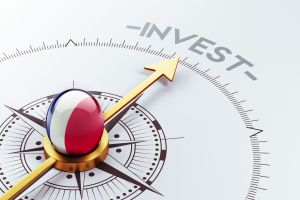OP-ED: ЧОМУ СВІТ РЕТЕЛЬНО ВИКОНУВАТИ КИТАЙ ТА ІНВЕСТИЦІЇ В МАЙБУТНЄ АФРИКИ
Хендрік дю Туа, спільно генеральний директор Investec Group сперечається африканські країни були стійкими і довгострокові перспективи зростання континенту - особливо зелений - зростання залишається привабливим для інвестицій в Африці.
By Hendrik du Toit is co-CEO of Investec Group
I remember a time, по 20 років тому, коли практично не професійно керований капітал, переміщуваний через кордон в Африці. When aid and corruption drove the investment narrative. When Africa was called the “безнадійний континент". When sustainability wasn’t even part of an investor’s vocabulary. We’ve come a long way.
The millennium heralded rapid growth across the African continent. At around 3%, дефолти по африканській інфраструктурі є одними з найнижчих в світі. Africa has the fastest growing population and is seeing a wave of innovation and entrepreneurship sweeping across the continent. The latter is strongly enabled by mobile phone technology which has directly facilitated a financing revolution. Внесетевих установки сонячних панелей набули широкого поширення, придбано через щомісячні платежі на стільникових телефонах, through companies like Mobisol and M-Kopa.
Звичайно, глобальні та внутрішні події, включаючи 2014 ціни на нафту шок вдарив великі країни особливо важко; ми бачили останнім часом зниження продуктивності в Анголі, Нігерія, and my home country of South Africa. But overall, African economies have been resilient and the continent’s long-term growth story – particularly green growth – remains compelling.
Мільярди доларів були вкладені в поновлювані джерела енергії по всьому континенту. В кінці минулого року, Нігерія випустив N10.69 млрд (US $ 29 млн) зелений зв'язок to fund local solar and forestry projects. This is Africa’s first sovereign green bond – one of only a handful in the world (поряд з Китаєм, Франція, Польща, Фіджі та Індонезії). Kenya will soon follow.
The Світовий банк also estimates that aggregate growth in Sub-Saharan Africa for 2018 буде близько 3.2%, в порівнянні з 2.4% минулого року. The continent is expected to host six of the 10-fastest growing economies of the world in 2018, в той час як традиційні активи під управлінням (в тому числі пенсійних і взаємних фондів) are forecast to grow to around US$1.1 trillion by 2020, up from US$634billion in 2014.
Коротко, Африка дуже багато «відкрита для бізнесу», particularly for investors who are chasing yield and diversification. China’s got the message, committing to US$60 billion in new investment in major capital projects across Africa. Indeed, Китай є невід'ємною частиною відродження Африки, ставши найбільшим експортним напрямом Африки, його найбільшим джерелом імпорту і останнім часом його найбільшим джерелом капіталу, як справедливість і борг.
Ці позитивні сигнали, but a lot more capital is still needed, зокрема, від великих інституційних інвесторів. Estimates put the Африканський дефіцит інфраструктури на рівні близько 90 млрд $ every year for the next decade. Across the continent, 620 мільйони людей досі немає електрики; 319 мільйони людей живуть без доступу до надійної питну воду; і тільки 34% мати під'їзну дорогу.
Є кілька речей, які можуть допомогти. по-перше, «Змішування» державний і приватний капітал може підвищити ризик і прибутковість активу, so vehicles which use development money to mitigate investor risks can attract much needed commercial investment. Some of these vehicles – like обмін валюти, which offers FX hedging in emerging markets – have successfully mobilised billions of dollars of private money for African projects.
Another example is the Інфраструктурний фонд Emerging Африка (EAIF) with projects ranging from water supply in Rwanda to solar power in Uganda. The EAIF is part of the Private Infrastructure Development Group (з капіталом від уряду, включаючи Великобританію, Швеція, Німеччина і Нідерланди) and recently announced that it had привернув свій перший комерційний кредитор в глобальній страхової компанії Allianz, as part of a $385 million fund-raising round. This investment signals a shift in appetite for African risk from institutional investors. These vehicles need to be scaled and replicated.
по-друге, to attract investment for high-impact assets like climate-resilient, sustainable infrastructure, development banks need to be more effective at crowding в private capital using instruments like political risk insurance and guarantees, not crowding them з. в кращому випадку, в багатосторонні банки розвитку (МБР) мобілізувати менше $1 приватного капіталу для кожного державного долар через свої портфелі. They should target much higher mobilisation ratios and sharply increase their share of private sector activities (які в даний час складають лише близько 30% діяльності MDB).
по-третє, frontier countries must compete for investor dollars by making it easier for the private sector to do business. This requires strong, політичне керівництво, depth in local capital markets, the right legal framework and transparent policies. In particular, local policies should support regional simplicity to facilitate cross-border operations that can generate scale. Наприклад, a very important, but much-overlooked regulatory amendment recently saw the amount that Південноафриканські пенсійні фонди можуть інвестувати в іншу частину Африки від збільшення 5% в 10%. It’s only when public markets are deep enough for strong exits that we’ll see bigger and bigger deals happening.
Головне, if we really want to see sustainable growth and the associated economic and financial returns, інвестиційне співтовариство повинне привести. We need to take a leaf out of China’s book, охоплює африканська інфраструктура, інвестиційні можливості, користуючись інструментів щодо зниження ризиків і усунення величезного розриву в сприйнятті ризики між що розвиваються і розвиненими ринками. Ми також можемо використовувати нашу інвестуючи потужність для приводу значення для акціонерів, а пріоритетності «зелений», сталий розвиток (наприклад. through initiatives like Climate Action 100+).
This is all part of how we move away from an “aid-based” narrative to one of business and investment. It is also how we can provide the platform for economic inclusion of the world’s most youthful and fastest growing labour force. I dream of a future shaped by bold and wise investment decisions.
ДЖЕРЕЛО: CNBC Африка

